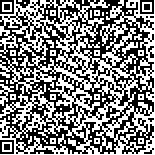| 摘要: |
| [摘要] 目的 探讨应用感觉神经定量检测仪评估肌骨超声引导刃针与传统刃针治疗神经根型颈椎病前后神经根损伤程度的应用价值。方法 选择2018年1月至2019年11月广西壮族自治区人民医院收治的神经根型颈椎病患者120例,采用随机数字表法将其分为A组和B组,每组60例。A组脱落5例,最终纳入55例;B组脱落7例,最终纳入53例。A组采用肌骨超声引导下刃针治疗,B组采用传统刃针治疗。应用感觉神经定量检测仪评估两组治疗前后患侧神经根损伤情况,并进行比较。结果 在2 000 Hz、250 Hz、5 Hz检测条件下,两组患者治疗前C6、C7、C8患侧感觉神经定量检测结果比较差异均无统计学意义(P>0.05)。在治疗后,两组C6、C7、C8感觉神经功能较治疗前改善(P<0.05),且A组感觉神经定量检测结果等级较B组更低,差异有统计学意义(P<0.05)。结论 感觉神经定量检测仪能够客观地评估神经根的损伤程度,对指导后续治疗有一定的参考意义。 |
| 关键词: 感觉神经定量检测仪 肌骨超声 刃针 神经根型颈椎病 |
| DOI:10.3969/j.issn.1674-3806.2022.05.08 |
| 分类号:R 242 |
| 基金项目:广西医疗卫生适宜技术开发与推广应用项目(编号:S2019079);广西中医药适宜技术开发与推广项目(编号:GZSY20-15);广西中医药重点学科建设项目(编号:GZXK-Z-20-51);广西博士后专项经费资助项目 |
|
| Application value of sensory nerve quantitative detector in evaluating the degree of nerve root injuries of two methods in treatment of cervical spondylotic radiculopathy |
|
GAO Xin, YANG Jian-rong, WANG Cheng, et al.
|
|
Department of Rehabilitation, the First Affiliated Hospital of Guangxi University of Traditional Chinese Medicine, Nanning 530023, China
|
| Abstract: |
| [Abstract] Objective To explore the application value of sensory nerve quantitative detector in evaluating the degree of nerve root injuries before and after musculoskeletal ultrasound-guided blade needle and traditional blade needle in the treatment of cervical spondylotic radiculopathy. Methods One hundred and twenty patients with cervical spondylotic radiculopathy admitted to the People′s Hospital of Guangxi Zhuang Autonomous Region from January 2018 to November 2019 were selected, and they were divided into group A and group B by random number table method, with 60 cases in each group. In the group A, 5 cases lost, and 55 cases were eventually included. In the group B, 7 cases lost, and 53 cases were eventually included. The group A was treated with musculoskeletal ultrasound-guided blade needle, and the group B was treated with traditional blade needle. The sensory nerve quantitative detector was used to evaluate the nerve injuries of the affected sides of the two groups before and after treatment, and these nerve injuries were compared between the two groups. Results Under the detection conditions of 2 000 Hz, 250 Hz and 5 Hz, there were no significant differences in the quantitative detection results of the affected side sensory nerves(C6, C7, and C8) of the patients in the two groups before treatment(P>0.05). After treatment, the sensory nerve functions of C6, C7, and C8 in the two groups were improved compared with those before treatment(P<0.05), and the grade of the quantitative detection results of sensory nerve in the group A was lower than that in the group B, and the difference was statistically significant(P<0.05). Conclusion Sensory nerve quantitative detector can objectively evaluate the degree of nerve root injury, which has a certain reference significance for guiding the follow-up treatment. |
| Key words: Sensory nerve quantitative detector Musculoskeletal ultrasound Blade needle Cervical spondylotic radiculopathy |

